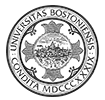Church Music and the Arts
View courses in
- Church Music and the Arts
- All Departments
- Church History
- Church Music and the Arts
- Doctor of Ministry
- Ethics
- Hebrew Bible
- Interdisciplinary Courses
- Master of Religion and Public Leadership
- Ministry in Church and Society
- Mission Studies
- New Testament
- Pastoral Psychology and Psychology of Religion
- Philosophy and Systematic Theology
- Practical Theology
- Religious Education
- Sociology of Religion
-
STH TA 715: Organ Seminar
Intended for organ majors, but open to others, this course covers repertoire, organ building and maintenance, technique, performance practice, and keyboard skills (sight-reading, score-reading, transposition, harmonization, improvisation and continuo). This is a two semester course. MSM organ majors must enroll in both semesters. (Cluster 3) -
STH TA 721: Seminary Singers
Open to all students who are interested in singing. Participation in one weekly rehearsal and chapel service, including any special concerts/events/tours that may come up during the semester. Please note: students who are employed by the Seminary Singers may not take the course for credit (Cluster 3) -
STH TA 801: Methods and Materials in Sacred Music (online)
Graduate Corequisites: (STHTC801) - Students will critically engage with materials and approaches in the principal areas of present- day church musicians including: choral and vocal techniques, conducting, the organ and other instruments, alternative and contemporary worship, and professional concerns. This course will enable students to gain greater competencies needed to function at optimal levels as a music minister or director in worship, religious, pastoral and educational settings. This will be accomplished through engagement with the methods and materials of church/synagogue (sacred) music and worship. (Cluster 3) -
STH TA 808: Marsh Chapel Choir
Audition required. Schedule includes Sunday worship in Marsh Chapel and several major concerts. (Cluster 3) -
STH TA 810: Congregational Christian Music
Study of the history of congregational song from biblical practice to the present day. Emphasis will be given to the development of theological, textual, and musical patterns, with special attention to incorporating both historic and emerging materials in worship. Strongly recommended for all MSM students; valuable for MDiv and doctoral students with special interest in worship. (Clusters 1 and 3) -
STH TA 811: Book of Common Prayer
This course provides an overview of the development of the Book of Common Prayer beginning with sixteenth-century England and leading up to the Book of Common Prayer 1979 of the Episcopal Church. Attention will be paid especially to the content and theology of the current BCP and the supplemental materials found in Enriching Our Worship, as well as to current discussions about ongoing liturgical revision in The Episcopal Church. (Clusters 1 and 3) -
STH TA 815: World Religions in Boston
In an increasingly pluralistic society it is essential to have some understanding of the beliefs and worship patterns of other religions and to be able to engage in dialogue with them. This course utilizes the Pluralism Project at Harvard to explore new forms of interfaith engagement. Seven weekly lectures introduce the issues surrounding interfaith work and a basic understanding of the tenets and practices of five major religions. Site visits (to Hindu, Muslim, Sikh, Buddhist and Jewish worship services) offer first- hand experiences and the opportunity for discussion and interaction with religious leaders and lay people. (Clusters 1 and 3) -
STH TA 820: Theology and the Arts
Aims to facilitate understanding of sacred art for its intrinsic worth and to assess how it may be used to enhance worship in the future. It will deal systematically with the theology of architectural space, church furnishing, vestments, stained glass, and decorative work. Students will be taught to look, interpret, and use the technical vocabulary of art and architecture and will develop skills for making value judgments about quality and content of art. Includes field trips to area churches and to the Museum of Fine Arts. (Clusters 1 and 3) -
STH TA 830: Passions & Requiems
An examination of the legacy of music written for liturgical and non-liturgical use, using longer text, tracing the origins, formulary, and development of the texts (including discussion of the authors). Case studies will form the basis of further inquiry. Cultural, social and historical context of the first performance will be discussed, along with an examination of the theology behind the text setting. There will be comparative analysis of other examples of the same genre, discussion of post-Reformation changes in text and approach, and national differences in style and technique. (Clusters 1 and 3)

